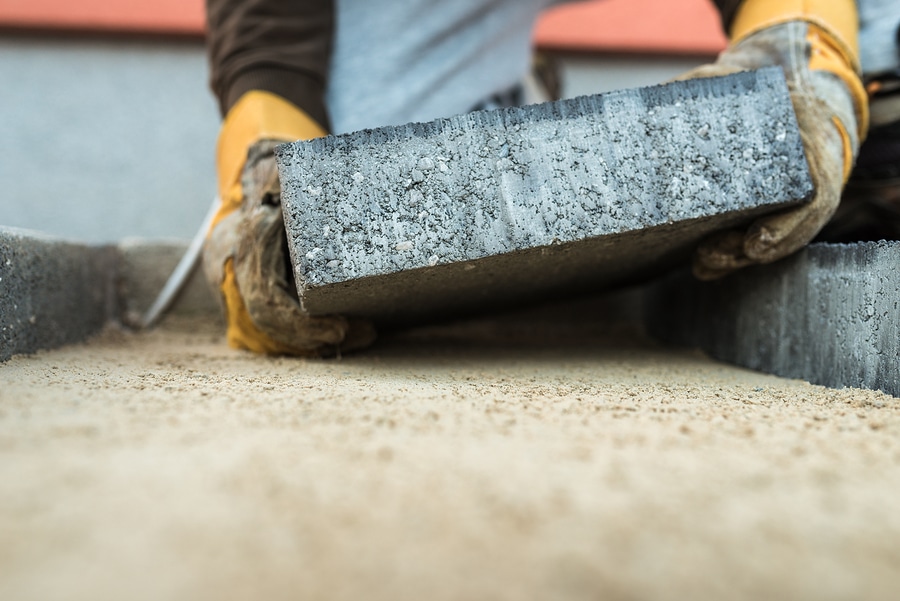Why the base is so important when installing pavers

So you’ve decided to include pavers in your Rock Valley or Sioux Center, Iowa backyard landscape design. It is a fine choice and a common one among many homeowners. Pavers come in dozens of material types including natural stone, brick, concrete, and permeable. All of these have their own unique benefits and construction differences and it is important to have a solid grasp of your intended results as well as your budget, time involved, and design complexity.
Brick pavers, for example, are very affordable and easy to work with, while natural stone is a higher expense product but looks beautiful and is incredibly strong. And don’t forget about paver colors and install patterns—you can choose nearly anything on the palette, from gray and black to red, pink, gold, and orange; and have fun with patterns such as herringbone, parquet, and basketweave. Ultimately, your final choice should also blend with your existing landscape (or final design if it is a new home) for a seamless appearance.
Pavers of many different materials are a beautiful hardscape addition for creating patios, walkways, pool surrounds, and even entire driveways. Pavers add insta-charm to a home’s exterior appearance and if correctly installed, will provide homeowners upwards of 30 years of stalwart good looks and service.
Let’s look closer at what it takes to start that long-term landscape success story.
Paver installation
It’s all in the base. Just like a solid foundation sets the tone for a well-built house, barn, Lego creation, or ice cream cone; a paver project needs a strong base. You don’t want your elegant, natural stone paver patio to sag on one end because of a wilting base.
To ensure your home’s hardscape pride and joy stands strong and looks great for years, it is important to design your paver project starting at the ground. When you’ve completed the measuring, layout, initial excavation, and leveling; it’s time to select the ideal base material that matches and holds up well with your particular soil conditions.
Here are some of the most common and reliable base materials for paver projects:
Sand
Sand is an excellent base layer choice for light to moderately-trafficked areas and it allows for consistent water drainage. Note that a base of sand alone is not the best for heavily-used pathways or driveways because paver materials may shift. Install at least a 2-inch-thick sand layer, wet it, and tamp for best compaction.
Compacted soil
For short-term paver projects or those built simply for, say, a planter base; a base of compacted soil can do the trick. Completely remove grass and weeds, and then use a tamper to compact the entire area to prevent future settling, washing away in a heavy rainstorm, or pavers sinking into the soil.
Crushed stone
Crushed stone is great for pavers intended for regular use. A 4 to 6-inch base of compacted stone is a reliable go-to choice for nearly any type of paver installation. It’s best to use base-specific crushed stone and then top it with a layer of sand.
For more information on paver installation, contact Outdoor Elements today at (712) 476-5299 or outdoorelementsinc.com.